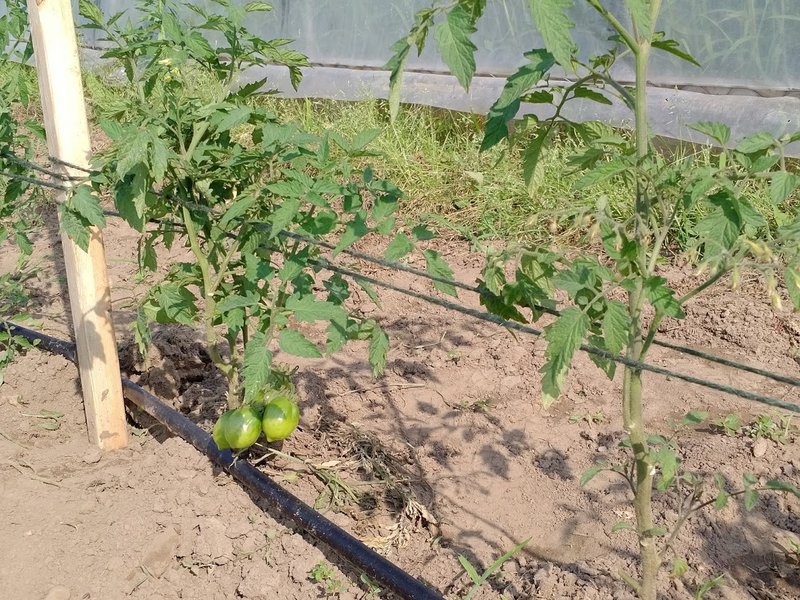A Better Way to Stake Tomatoes

Bob Wildfong
When I started gardening I read a book that told me to stake my tomatoes with posts stuck in the ground. It wanted me to put four posts around every plant, and train a single branch onto each post. That was a lot of wooden posts, a lot of work, and I lost count of the branches. I don't know the name of that book anymore because I tossed it out.
There's a much better way, and it works for lots of commercial growers who don't have time for fussy tomato stakes but need high quality tomatoes. It's often called the "Florida weave" system, but it's also been called the "Basket weave" or "Cat's cradle" because you literally weave your tomato plants into place to hold them up.
Tomatoes grow best when they're elevated above ground, and when the lower branches are removed. This improves air flow around the plants to prevent diseases like mildew and blight, and it prevents the fruit from rotting by contact with the ground.
- Start by planting your tomato plants in a row. Whether you have fifty or only three, it works best for them to be in a straight line. I like to space my plants 2 to 3 feet apart to give them enough room to grow.
- Put stakes in between the plants about every ten feet. You don't need a stake for every plant (or four per plant like my old book said!). Stakes can be wood or metal. They should be buried about a foot deep to be sturdy, and they should stand about as tall as you expect the plants to grow.
- As your tomato plant start to grow, remove the side branches that appear in the lower 10 - 12 inches of the stem. The reason is that these branches will grow big by the end of the season and make your plant bushy, hard to contain, and restrict air flow. It's pretty easy to do: just pinch off the shoots as they appear, if they're in the bottom foot of the stem. You want the plant to grow like a tree, with an open trunk at the bottom, rather than like a bush.
- Then you weave. When your plants get tall enough that they start to need support, tie a long piece of twine to the end post, about 6 inches below the tops of the plants. Then walk along the row, weaving the twine back and forth, first on your side of one plant, then on the other side of the next plant, back to your side of the next, and so on. When you get to a post, loop the twine around it, gently pulling it taut. Turn around and weave back toward the start, but on the opposite sides of each plant. Finally, tie the twine to your starting post, pulling it taut. When you're done, you should have twine running twice along the row, on both sides of each plant, and wrapped around each post. The plants will be woven snugly so they can't fall down.
- Repeat every few weeks when you see that the plants are taller and need another level of support.
Compared with staking each plant individually, this method uses a lot less material, and it takes a fraction of the time and effort. For me, the key is to get the posts in early, so when things are busy in the summer there's no excuse for neglecting another quick run of twine. It's easy and efficient if you do it when the plants are just about ready to sag, but harder if you've left it too long and they're already too heavy to lift into the weave.
As always, the best gardening is easy gardening, and this is the easiest way I know to keep tomato plants healthy and tidy.
--
Bob Wildfong is Seeds of Diversity's executive director
Not yet a member?
An annual membership to Seeds of Diversity gives you access to our seed exchange, seed grow-out programs, and our online news.

We depend on donations to do our work.

Thank you for your support!
